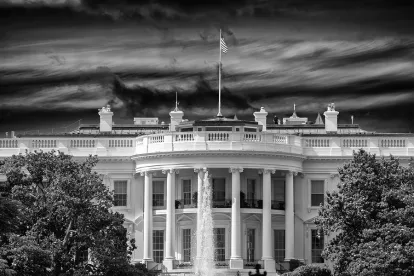It’s spring recess in D.C., and the Senate and House will be off for two weeks. While the recess means lighter traffic, it doesn’t mean that the labor and employment policy machine grinds to a halt. Here is this week’s Buzz:
Like Sands Through the Hourglass… So are the days at the National Labor Relations Board (NLRB), where each day seemingly brings a new development in the joint-employer soap opera:
- First, late last week, Member William Emanuel shot back at the inspector general’s report, which concluded he should have recused himself from the Hy-Brand decision that overturned Browning-Ferris (BFI). Emanuel’s attorney argues that there is “no precedent” for the conclusion that Hy-Brand and BFI are the “same matter,” and that the new “issue preclusion” standard will have dramatic implications for the Board in the future.
- Second, in a “turnabout is fair play” maneuver, the Competitive Enterprise Institute has requested that the NLRB’s inspector general investigate Member Mark Pearce “for improperly disclosing internal Board deliberations.” The allegation is based on a Wall Street Journal report claiming that Pearce blabbed about the Hy-Brand reversal before it was made public.
- Third, Bloomberg BNA is reporting that the inspector general is, indeed, opening an investigation into Member Pearce’s alleged loose lips.
- Finally, the National Right to Work Legal Defense Foundation is asking the Council of the Inspectors General on Integrity and Efficiency (the watchdog of the watchdogs) to investigate whether the NLRB inspector general “disseminated confidential NLRB deliberations” during his investigation of Member Emanuel.
Persuader Update. It looks like the end may be near (for now) for the 2016 persuader rule. The current administration’s proposal to rescind the rule was sent to the Office of Information and Regulatory Affairs earlier this week. This is the last stop for regulations before they are officially finalized. The Buzz is hopeful that the final rule will be a clean rescission of the 2016 interpretation.
DOL Compliance Videos. The U.S. Department of Labor’s (DOL) Wage and Hour Division (WHD) has released five Fair Labor Standards Act (FLSA) explanatory videos that “strip away the ‘legalese’ and provide employers the basic information they need to understand their obligations and to comply with the law.” The videos describe FLSA coverage, minimum wage, deductions, hours worked, and overtime. Along with the return of opinion letters and the recently announced Payroll Audit Independent Determination (PAID) program, these videos provide another example of the WHD’s increasingly cooperative approach to compliance.
OFCCP Wants to Hear From You! Not to be outdone by its WHD buddies down the hall, the Office of Federal Contract Compliance Programs (OFCCP) has announced that it will be sending out a survey to federal contractors in order to collect information on how it can improve “communication, transparency, and timeliness during . . . compliance evaluations.” The survey is likely a follow-up from OFCCP’s contractor compliance assistance town halls that were held in the fall of 2017. Lauren B. Hicks and Leigh M. Nason have more.
ADA Reform Update. The Buzz recently reported on the passage of the ADA Education and Reform Act of 2017 in the House of Representatives. The bill has moved on for consideration by the Senate, but it doesn’t look like it will go much further than that. That is because a group of 43 Democratic senators—led by Sen. Tammy Duckworth (D-IL)—sent a scorching letter to Sen. Mitch McConnell (R-KY) vowing their opposition. With these numbers, McConnell likely won’t have the votes to break a filibuster of the bill, and that’s assuming all Republicans vote yes, which isn’t guaranteed on a matter such as this one.
What’s Next for Unions? Many stakeholders are asking themselves this question these days, particularly while we all await a ruling in the Supreme Court’s Janus v. AFSCME case. This article explores the increasing popularity of unions among millennials and professional workers and how this may impact a post-Janus world.
Easter at the White House. For the second week in a row, we are examining the impact of the Turf Protection Law of 1876. Last week, we referenced the law’s role in banning sledding from the grounds of the U.S. Capitol. But the broad prohibition on the use of “any portion of the Capitol Grounds and terraces from being used as playgrounds or otherwise” also had the effect of banning another beloved activity from Capitol grounds: Easter egg rolling. Local schools used to be closed on the Monday following Easter to allow children to roll their Easter eggs on the lawn of the Capitol. However, this activity destroyed the grass and annoyed lawmakers, which eventually led to the ban in 1876. But in 1878, disappointed children lobbied President Rutherford B. Hayes to allow Easter egg rolling on the White House lawn, and an annual tradition was born.




 />i
/>i

